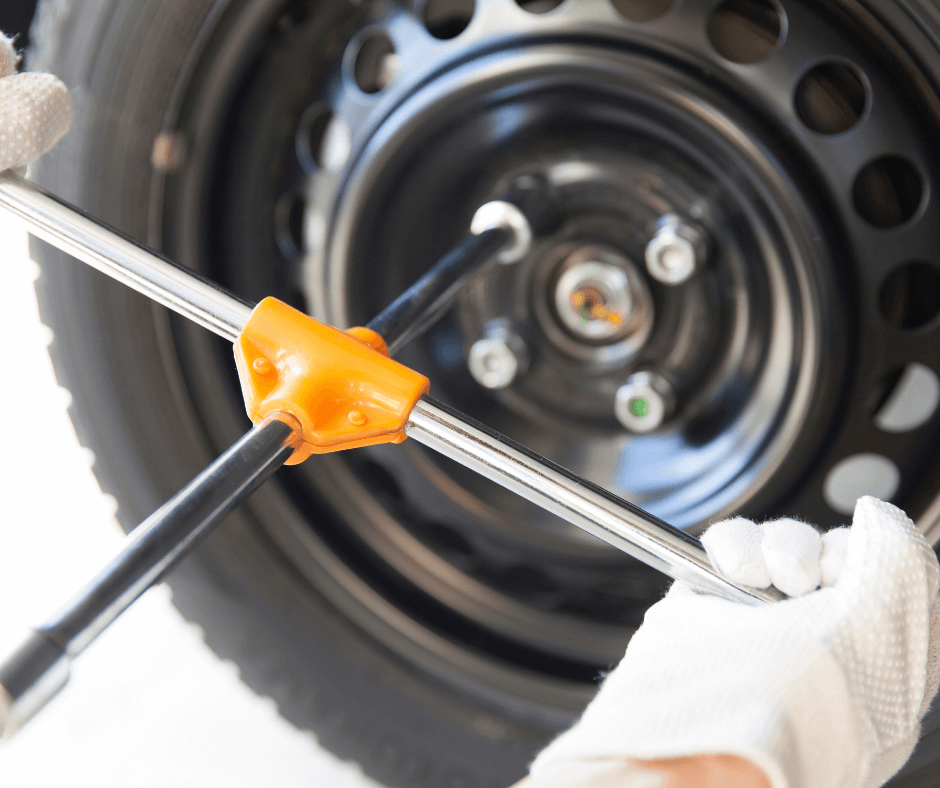Have you ever been in a situation where your car’s flat tire is blocking the lane and there are cars trying to avoid it? Or maybe you had a flat tire while driving on the highway, and now you have no idea how to fix it.
If this sounds familiar, then you might be in for some trouble. However, don’t worry! You can use this blog post to learn about the tips and tricks of repairing a flat tire!
Tools Needed To Fix A Flat Tire
Are you a new or experienced driver that has ever had to deal with a flat tire? If so, you know the pain of having to fix it on your own.
It is always better to be prepared and have the tools necessary in order to do so. That is why we are going over some of the most important tools needed in order to change your tire without any issues.
From changing a flat tire to inflating the spare, it is important for drivers to have all of these items on hand.
Jack
You can use a jack to raise the car off the ground in order to get access underneath. You should always place something under the jack to protect the car’s frame.
Spare Tire (Tire With Air)
If the spare tire is in good condition, it can be used as a temporary replacement.
Be sure to regularly inflate the spare tire for yourself and check tire pressure monthly – it should be checked before long trips.
Lug Wrench
A lug wrench is a tool that can be used to remove the lug nuts from your vehicle’s tires.
Vehicle Owner’s Manual
A vehicle owner’s manual, also known as an operator’s guide or owner’s handbook is typically a book that comes with the car when it is purchased, which the owner can use to learn how to operate and maintain their vehicle.
Air Compressor
If you need tools to repair your flat tire, you may want to get an air compressor for car tires. They’re a good investment because they can be used in a variety of situations.
Tire sealant
The tire sealant is a liquid or rubber compound that is sprayed on an area of the tire where there is damage. The sealant cannot repair damaged tread, but it can be used to seal tire punctures.
You can use rubber cement too.
Flashlight or headlamps
Even if you’re not changing your tire in the dark, it’s a good idea to have some sort of lighting tools on hand. If you’re changing a tire in the dark, it’s not safe to have your phone or any other light source shining directly into oncoming car traffic.
Rain poncho (Coat)
Pack a raincoat or poncho in your car. If you get stuck on the side of the road during a rainstorm, having a rain poncho or coat will make the task of changing your car’s flat tire less time-consuming and more pleasant.
Wheel Chocks
Wheel chocks are utilized for a number of reasons. If you have ever driven on an unpaved or sloppy surface, the wheel could easily slide off of the road. Chocks are used to stop this from happening.
Tire Repair Kit
Good tools to have in your car are a tire repair kit. These kits can usually be found at an auto parts store near you or online. They are inexpensive and have tools such as tire plugs, valves, valve caps, a tool to remove the hubcap (if you have one), tools to remove the tire, and tools for inflating.
When looking at a kit, you want one that has everything you need.
Procedure To Change The Flat Tire

Safe Location
When you realize you have an issue with a tire, slow down your speed and try to pull over somewhere safe. Find a flat, level surface.
Hazard Lights
Turn on your car’s hazard lights. This will alert other drivers to stay away and protect you from being hit by another vehicle while changing the tire.
Emergency Brake
Put the car in park or neutral and set the emergency brake
Put Wheel Chocks
Before changing your car’s tire-wheel chocks are necessary to ensure that the car is stable while you fix your tire. If not, it could roll away and cause more damage.
Remove Wheel cover
Before removing your tire, take off the wheel cover. To do this, use a screwdriver to pry it off. This will give you access to the lug nuts and tire iron so that your flat tire can be fixed as quickly as possible!
Lose The Lug Nuts
Loosen the lug nuts on all four tires by turning them counterclockwise with a lug wrench.
Place The Jack And Raise
Place the jack stands under your car’s frame and raise them until they are secure. Make sure the jack is stable and fix it if needed. A jack should be used to lift the vehicle at a 45-degree angle.
Remove The Lug Nuts
The lug nuts should now be loose, so it’s time to remove them all the way.
Take That Tire Out
Step on the metal lever until the tire is released from the hub and then remove the wheel by pulling it slowly towards you. Set it on its side and then remove any dirt and debris from inside the tire with a small brush.
Mount the Spare Wheel
Place the spare wheel on the hub, lining up the bolts with appropriate holes. Push until you see lug-heads poking through.
Tighten The Lug Nuts
Put the lugs back on the bolts. Tighten them all by hand first. Then check them and tighten them some more.
You need to lower the car so that the spare tire is on the ground but still not fully on. You should use a wrench and tighten up all of the nuts until they are good.
Place The Wheel Cover
If the wheel cover you removed from the flat tire is compatible with your spare, place it over your spare and fasten it into place in the same manner that you originally removed it. If not, stow away your damaged tire along with your tools.
Check The Tire Pressure
Check the pressure before getting back on the road. If the pressure is low, fix it right away with an inflator if you have one.
Take your removed tire to the technician as the spare tire is just a temporary solution.
Repair A Flat Tire WIth a Repair Kit
The first thing you’ll need to do is find the puncture. If your tire has a flat spot, it’s most likely from hitting something sharp that pierced through the rubber.
You can check for this by applying pressure to the tire and looking at where it deflates. If you’re not sure what caused the puncture, it’s best to fix your tire with a plug kit. This will prevent any further damage and is a quick fix for all but the most serious of tire defects.
The process is as easy as locating where the hole or tear in the rubber is located by looking at signs on the ground or tire damage, removing the plug from your kit, and pushing it through until it’s firmly in place.
Check for the air pressure in your tire and reinstall it and you are all good to go.
A Few More Tips
It is great to know how to fix a tire flat, but it is even more important to have your tires checked and rotated regularly. Here are some things you can do:
Every 3 months, Inflate the tire.
Every 6 months rotate the tires.
Every 12 months, replace the tires.
When You Need An Expert, Trust Dependable Car Care
Changing or repairing a flat tire is no easy task, but by following the prevention methods mentioned earlier in this article, you can do it with minimal involvement and your tires will last longer.
If you ever have any questions or are looking for more information about how to maintain your car’s health, call us at Dependable Car Care. Our experts are always happy to answer all of your automotive maintenance needs!


